#bahumono
Text
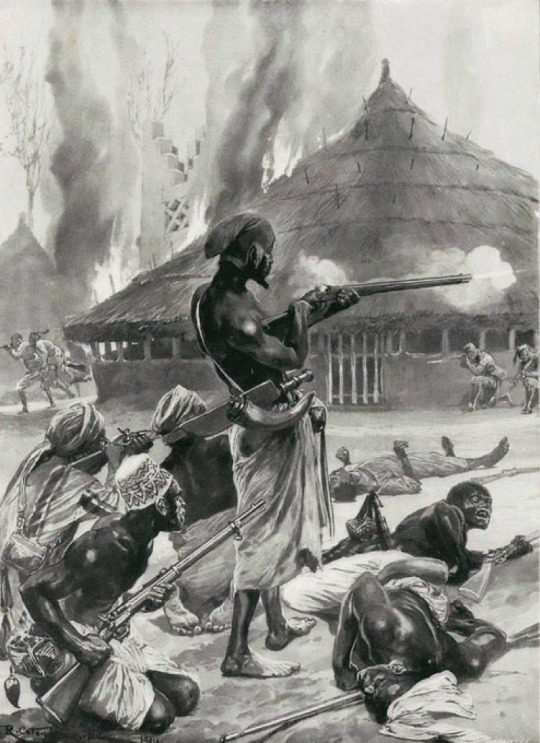
Aro Confederacy
The Aro Confederacy (1690–1902) was a political union orchestrated by the Aro people, Igbo subgroup, centered in Arochukwu in present-day southeastern Nigeria. The Aro Confederacy kingdom was founded after the beginning of the Aro-Ibibio Wars. Their influence and presence was all over Eastern Nigeria, lower Middle Belt, and parts of present-day Cameroon and Equatorial Guinea during the 18th and 19th centuries. The Arochukwu Kingdom was an economic, political, and an oracular center as it was home of the Ibini Ukpabi oracle, High Priests, the Aro King Eze Aro, and central council (Okpankpo). The Aro Confederacy was a powerful and influential political and economic alliance of various Igbo-speaking communities in southeastern Nigeria. It emerged during the 17th century and played a significant role in the region until the late 19th century.
The exact origins of the Aro Confederacy are not precisely documented, but it is believed to have been established around the mid-17th century. The Aro people, who were part of the Igbo ethnic group, inhabited the region around present-day Arochukwu in Abia State, Nigeria. They were skilled traders and missionaries who played a pivotal role in connecting various Igbo communities. This migration and their military power, and wars with neighboring kingdoms like supported by their alliances with several related neighboring Igbo and eastern Cross River militarized states (particularly Ohafia, Edda, Abam, Abiriba, Afikpo, Ekoi, Bahumono, Amasiri etc.), quickly established the Aro Confederacy as a regional economic power. The Aro Confederacy's strength came from its well-organized network of Aro agents who were dispersed across different communities in the region. These agents acted as intermediaries in trade, diplomacy, and religious matters. They facilitated commerce, resolved disputes, and spread the worship of the Aro deity known as the "Long Juju" oracle."The Opening Up of Nigeria, the Expedition Against the Aros by Richard Caton Woodville II" 1901
The "Long Juju" oracle was the spiritual centerpiece of the Aro Confederacy. It was housed in Arochukwu and considered a potent source of political authority and religious guidance. The Aro people used the oracle to enforce their influence and control over surrounding communities. It also served as a means to administer justice and settle disputes, often attracting pilgrims seeking solutions to their problems.
The Aro Confederacy gained significant economic power through trade and commerce Their economy was primarily based on agriculture, with the cultivation of crops like palm oil, yams, and cassava. They were also involved in trade with neighboring communities and European merchants. They controlled trade routes that passed through their territories, collecting tolls and taxes from traders. The Aro also engaged in the Trans-Atlantic slave trade by capturing and selling slaves to European traders.
Aro activities on the coast helped the growth of city-states in the Niger Delta, and these city states became important centres for the export of palm oil and slaves. Such city-states included Opobo, Bonny, Nembe, Calabar, as well as other slave trading city-states controlled by the Ijaw, Efik, and Igbo. The Aros formed a strong trading network, colonies, and incorporated hundreds of communities that formed into powerful kingdoms. The Ajalli, Arondizuogu, Ndikelionwu, and Igbene Kingdoms were some of the most powerful Aro states in the Confederacy after Arochukwu. Some were founded and named after commanders and chiefs like Izuogu Mgbokpo and Iheme who led Aro/Abam forces to conquer Ikpa Ora and founded Arondizuogu. Later Aro commanders such as Okoro Idozuka (also of Arondizuogu) expanded the state's borders through warfare at the start of the 19th century. Aro migrations also played a large role in the expansion of Ozizza, Afikpo, Amasiri, Izombe, and many other city-states. For example, Aro soldiers founded at least three villages in Ozizza. The Aro Confederacy's power, however, derived mostly from its economic and religious position. With European colonists on their way at the end of the 19th century, things changed.Burning of Arochukwu 1901
During the 1890s, the Royal Niger Company of Britain bore friction with the Aros because of their economic dominance. The Aro resisted British penetration in the hinterland because their economic and religious influence was being threatened. The Aro and their allies launched offensives against British allies in Igboland and Ibibioland. After failed negotiations, the British attempted to conquer the Aro Confederacy in 1899. By 1901, the tensions were especially intensified when British prepared for the Aro Expedition. The invasion of Obegu (in Igboland) was the last major Aro offensive before the start of the Anglo-Aro War. In November 1901, the British launched the Aro Expedition and after strong Aro resistance, Arochukwu was captured on December 28, 1901. By early 1902, the war was over, and the Aro Confederacy collapsed. Contrary to the belief that the Ibini Ukpabi was destroyed, the shrine still exists, and is intact in Arochukwu and serves mainly as a tourist site.

#african#afrakan#kemetic dreams#africans#afrakans#brown skin#brownskin#african culture#afrakan spirituality#arochukwu#anglo aro war#obegu#igboland#ibibioland#igbo#igbo culture#british#long juju#aro confederacy#confederacy#nigerian#cameroon
26 notes
·
View notes
Text
Mami Wata
Mami Wata (Mammy Water), or La Sirene, is a water spirit venerated in West, Central, and Southern Africa and in the African diaspora in the Americas. Mami Wata spirits are usually female but are sometimes male.
The appearance of her hair ranges from straight, curly to kinky black and combed straight back. Most scholarly sources suggest the name "Mami Wata" is a pidgin English derivation of "Mother Water", reflecting the goddess's title ("mother of water" or "grandmother of water") in the Agni language of Côte d'Ivoire, although this etymology has been disputed by Africanist writers in favor of various non-English etymologies, for example, the suggestion of a linguistic derivation from ancient Egyptian and Mesopotamian, such as the Egyptian terms "Mami" or "Mama", meaning "truth" "Uati" or "Uat-Ur" for "ocean water". While the exact context of the etymology has been challenged, the purpose of Mami Wata's name derived from pidgin English is to both distinguish her "otherness" and connection with the African and African diaspora. Mami Wata is understood to be a foreign spirit by Africans, and the recognition of her and her name is also a recognition of Africans comprehending worlds other than their own.

A participant at a Mami Wata coming out ceremony.
Historical evidence for such deep antiquity of the goddess's tradition has never been offered. Commonly thought to be a single entity, the term has been applied to a number of African water deity traditions across various cultures. These African cultures were often matriarchal and though "Mami Wata" can refer to both male and female deities, they are most typically thought of as feminine and most often take on a female form in artistic representations.
Mami Wata is often described as a mermaid-like figure, with a woman's upper body (often nude) and the hindquarters of a fish or serpent. In other tales, Mami Wata is fully human in appearance (though never human). The existence and spiritual importance of Mami Wata is deeply rooted in the ancient tradition and mythology of the coastal southeastern Nigerians (Efik, Ibibio, Igbo, Bahumono and Annang people). Mami Wata often carries expensive baubles such as combs, mirrors, and watches. A large snake (symbol of divination and divinity) frequently accompanies her, wrapping itself around her and laying its head between her breasts. Other times, she may try to pass as completely human, wandering busy markets or patronising bars. She may also manifest in a number of other forms, including as a man. Traders in the 20th century carried similar beliefs with them from Senegal to as far as Zambia. As the Mami Wata traditions continued to re-emerge, native water deities were syncretized into it.
While commonly seen with a mirror in hand, Mami Wata is able to embody ritual performances and worship ceremonies for Africans through this instrument. Her mirror represents a movement through the present and the future; her devotees are able to create their own reality through imaging of themselves in their own recreation of Mami Wata's world. In this world, one can embody her sacred powers, fulfilling the inventions of their own reality.
Traditions on both sides of the Atlantic tell of the spirit abducting her followers or random people whilst they are swimming or boating. She brings them to her paradisiacal realm, which may be underwater, in the spirit world, or both. Should she allow them to leave, the travellers usually return in dry clothing and with a new spiritual understanding reflected in their gaze. These returnees often grow wealthier, more attractive, and more easygoing after the encounter.
Van Stipriaan further reports that other tales describe river travellers (usually men) chancing upon the spirit. She is inevitably grooming herself, combing her hair, and peering at herself in a mirror. Upon noticing the intruder, she flees into the water and leaves her possessions behind. The traveller then takes the invaluable items. Later, Mami Wata appears to the thief in his dreams to demand the return of her things. Should he agree, she further demands a promise from him to be sexually faithful to her. The agreement grants the person riches; refusal to return the possessions or to be faithful brings the man ill-fortune.
Her worship is as diverse as her initiates, priesthood and worshippers, although some parallels may be drawn. Groups of people may gather in her name, but the spirit is much more prone to interacting with followers on a one-on-one basis. She thus has many priests and mediums in Africa, America and in the Caribbean who are specifically born and initiated to her.
In Nigeria, devotees typically wear red and white clothing, as these colors represent that particular Mami's dual nature. In Igbo iconography, red represents such qualities as death, destruction, heat, being male, physicality, and power. In contrast, white symbolises death, but also can symbolize beauty, creation, being female, new life, spirituality, translucence, water, and wealth. This regalia may also include a cloth snake wrapped about the waist. The Mami Wata shrines may also be decorated in these colors, and items such as bells, carvings, Christian or Indian prints, dolls, incense, spirits, and remnants of previous sacrifices often adorn such places.
Intense dancing accompanied by musical instruments such as African guitars or harmonicas often forms the core of Mami Wata worship. Followers dance to the point of entering a trance. At this point, Mami Wata possesses the person and speaks to him or her. Offerings to the spirit are also important, and Mami Wata prefers gifts of delicious food and drink, alcohol, fragrant objects (such as pomade, powder, incense, and soap), and expensive goods like jewellery. Modern worshippers usually leave her gifts of manufactured goods, such as Coca-Cola or designer jewellery.
Nevertheless, she largely wants her followers to be healthy and well off. More broadly, people blame the spirit for all sorts of misfortune. In Cameroon, for example, Mami Wata is ascribed with causing the strong undertow that kills many swimmers each year along the coast.
According to Bastian, Mami Wata's association with sex and lust is somewhat paradoxically linked to one with fidelity. According to a Nigerian tradition, male followers may encounter the spirit in the guise of a beautiful, sexually promiscuous woman, such as a prostitute. In Nigerian popular stories, Mami Wata may seduce a favoured male devotee and then show herself to him following coitus. She then demands his complete sexual faithfulness and secrecy about the matter. Acceptance means wealth and fortune; rejection spells the ruin of his family, finances, and job.
Another prominent aspect of the Mami Wata deities is their connection to healing. If someone comes down with an incurable, languorous illness, Mami Wata often takes the blame. The illness is evidence that Mami Wata has taken an interest in the afflicted person and that only she can cure him or her. Similarly, several other ailments may be attributed to the water spirit. In Nigeria, for example, she takes the blame for everything from headaches to sterility.
In fact, barren mothers often call upon the spirit to cure their affliction. Many traditions hold that Mami Wata herself is barren, so if she gives a woman a child, that woman inherently becomes more distanced from the spirit's true nature. The woman will thus be less likely to become wealthy or attractive through her devotion to Mami Wata. Images of women with children often decorate shrines to the spirit.
The people who inhabit the coastal region from Benin, Ghana and Togo worship a vast pantheon of water deities, of which Mami Wata is most prominent. An entire hierarchy of the Mami Wata priesthood exists in this region to officiate ceremonies, maintain the shrines, conduct healing rituals, and initiate new priests and priestesses into the service of various Mami Wata deities. On February, 15, 2020 at 9:00 AM in the city of Cotonou, Benin, Hounnon Behumbeza, a high priest of Vodou and Mami Wata, was officially appointed the Supreme Chief of Mami Wata. As an indication of how revered Mami Wata is in the region, Hounnon Behumbeza's coronation as Supreme Chief of Mami Wata was broadcast live on various television news programs, and featured in local newspapers. The coronation was attended by hundreds of priests from around the region, and the highest dignitaries of Vodou and the Mami Wata tradition. Also in attendance were Benin Republic's minister of culture and several local government officials.
Social disparities in West Africa diffused the belief of individual contracts with spirits as the cause of personal wealth and success in earthly life. Mami Wata embodies the power of money, wealthy and fame acquired in the absence of ethical laws and obligations to the neighbour. The unique exception is a lifelong contract somewhere read as private investment or as long-term debt that can be extinguished or promised without being fulfilled.
As other deities become absorbed into the figure of Mami Wata, the spirit often takes on characteristics unique to a particular region or culture. In Trinidad and Tobago, for example, Maman Dlo plays the role of guardian of nature, punishing overzealous hunters or woodcutters. She is the lover of Papa Bois, a nature spirit.
It is believed that all of ancient Africa possessed a multitude of water-spirit traditions before the first contact with Europeans. Most of these were regarded as female. Dual natures of good and evil were not uncommon, reflecting the fact that water is an important means of providing communication, food, drink, trade, and transportation, but it can drown people, flood fields or villages, and provide passage to intruders. Van Stipriaan suggests that she may be based on the West African manatee, which is an idea that has been proposed by scientists of the Ghanaian Council for Scientific and Industrial Research (CSIR); in fact, "Mami Wata" is a common name for this animal in the region. Jill Salmons argues that the mermaid image may have come into being after contact with Europeans. The ships of traders and slavers often had carvings of mermaid figures on their prows, for example, and tales of mermaids were popular among sailors of the time. On the other hand, white is traditionally associated with the spirit world in many cultures of Nigeria. The people of the Cross River area often whiten their skin with talcum or other substances for rituals and for cosmetic reasons, for example.
Van Stipriaan speculates that Liberian traders of the Kru ethnic group moved up and down the west coast of Africa from Liberia to Cameroon beginning in the 19th century. They may have spread their own water-spirit beliefs with them and helped to standardise conceptions in West Africa. Their perceived wealth may have helped establish the spirit as one of good fortune.
According to Hounnon Behumbeza, high priest of the Mami Wata tradition in West Africa (Benin, Togo and Ghana), "The Mami Wata tradition consists of a huge pantheon of deities and spirits, not just the often portrayed mermaid". Behumbeza goes on to say that "true knowledge and understanding of Mami Wata is shared with those initiated into the priesthood of Mami and with those who hear the calling for initiation into her mysteries."
Van Stipriaan also believes that this period introduced West Africa to what would become the definitive image of Mami Wata. Circa 1887, a chromolithograph of a female Samoan snake charmer appeared in Nigeria. According to the British art historian Kenneth C. Murray, the poster was titled Der Schlangenbändiger ("The Snake Charmer") and was originally created sometime between 1880 and 1887. Dr. Tobias Wendl, director of the Iwalewa-Haus Africa Centre at the University of Bayreuth, was unable to confirm this after extensive searching (as Der Schlangenbändiger is a masculine term, the title seems suspect). He did discover a very similar photograph titled Die samoanische Schlangenbändigerin Maladamatjaute ("the Samoan Snake Charmer (fem.) Maladamatjaute") in the collection of the Wilhelm-Zimmermann Archive in Hamburg. Whichever the original image, it was almost certainly a poster of a celebrated late 19th-century snake charmer who performed under the stage name "Nala Damajanti", which appeared in several variations, particularly "Maladamatjaute", at numerous venues, including the Folies Bergère in 1886. This identification was also made by Drewal in a 2012 book chapter on Mami Wata. Despite exotic claims of her nationality, she was later identified as one Émilie Poupon of Nantey, France.
This image—an enticing woman with long, black hair and a large snake slithering up between her breasts, ambiguous if she is human or mermaid beyond the image—apparently caught the imaginations of the Africans who saw it; it was the definitive image of the spirit. Before long, Mami Wata posters appeared in over a dozen countries and the popular image was reproduced in 1955 by the Shree Ram Calendar Company in Bombay for the African market. People began creating Mami Wata art of their own, much of it influenced by the lithograph.
21 notes
·
View notes
Text
Check out names of 372 Races In Nigeria, Which One Is Yours?

ARE YOU TRULY A NIGERIAN?
We are learning about each other on this topic and by the end of the year, i will be updating this post with a link to learning more about various races in Nigeria.
Here is a list of over 300 races in Nigeria, which one is yours?
Kindly write about your race with photos and send it to ayangaluooduarere.com or omooduareregmaill.com and don't forget to bookmark this page because it will be updated with links to various races before the end of the year.
if yours is not listed bellow, please write about your race, location and send it to ayangaluooduarere.com or omooduarere(@)gmaill.com
1 Abayon Cross River
2 Abua (Odual) Rivers - About Abua People in Nigeria
3 Achipa (Achipawa) Kebbi
4 Adim Cross River
5 Adun Cross River
6 Affade Yobe
7 Afizere Plateau
8 Afo Plateau
9 Agbo Cross River
10 Akaju-Ndem (Akajuk) Cross River
11 Akweya-Yachi Benue
12 Alago (Arago) Piateau
13 Amo Plateau
14 Anaguta Plateau
15 Anang Akwa lbom
16 Andoni Akwa lbom, Rivers
17 Angas Bauchi, Jigawa, Plateau
18 Ankwei Plateau
19 Anyima Cross River
20 Attakar (ataka) Kaduna
21 Auyoka (Auyokawa) Jigawa
22 Awori Lagos, Ogun
23 Ayu Kaduna
24 Babur Adamawa, Bomo, Taraba, Yobe
25 Bachama Adamawa
26 Bachere Cross River
27 Bada Plateau
28 Bade Yobe
29 Bahumono Cross River
30 Bakulung Taraba
31 Bali Taraba
32 Bambora (Bambarawa) Bauchi
33 Bambuko Taraba
34 Banda (Bandawa) Taraba
35 Banka (Bankalawa) Bauchi
36 Banso (Panso) Adamawa
37 Bara (Barawa) Bauchi
38 Barke Bauchi
39 Baruba (Barba) Niger
40 Bashiri (Bashirawa) Plateau
41 Bassa Kaduna, Kogi, Niger, Plateau
42 Batta Adamawa
43 Baushi Niger
44 Baya Adamawa
45 Bekwarra Cross River
46 Bele (Buli, Belewa) Bauchi
47 Betso (Bete) Taraba
48 Bette Cross River
49 Bilei Adamawa
50 Bille Adamawa
51 Bina (Binawa) Kaduna
52 Bini Edo
53 Birom Plateau
54 Bobua Taraba
55 Boki (Nki) Cross River
56 Bkkos Plateau
57 Boko (Bussawa, Bargawa) Niger
58 Bole (Bolewa) Bauchi, Yobe
59 Botlere Adamawa
60 Boma (Bomawa, Burmano) Bauchi
61 Bomboro Bauchi
62 Buduma Borno, Niger
63 Buji Plateau
64 Buli Bauchi
65 Bunu Kogi
66 Bura Adamawa
67 Burak Bauchi
68 Burma (Burmawa) Plateau
69 Buru Yobe
70 Buta (Butawa) Bauchi
71 Bwall Plateau
72 Bwatiye Adamawa
73 Bwazza Adamawa
74 Challa Plateau
75 Chama (Chamawa Fitilai) Bauchi
76 Chamba Taraba
77 Chamo Bauchi
78 Chibok (Chibbak) Yobe
79 Chinine Borno
80 Chip Plateau
81 Chokobo Plateau
82 Chukkol Taraba
83 Daba Adamawa
84 Dadiya Bauchi
85 Daka Adamawa
86 Dakarkari Niger, Kebbi
87 Danda (Dandawa) Kebbi
88 Dangsa Taraba
89 Daza (Dere, Derewa) Bauchi
90 Degema Rivers
91 Deno (Denawa) Bauchi
92 Dghwede Bomo
93 Diba Taraba
94 Doemak (Dumuk) Plateau
95 Ouguri Bauchi
96 Duka (Dukawa) Kebbi
97 Duma (Dumawa) Bauchi
98 Ebana (Ebani) Rivers
99 Ebirra (lgbirra) Edo, Kogi, Ondo
100 Ebu Edo, Kogi
101 Efik Cross River
102 Egbema Rivers
103 Egede (lgedde) Benue
104 Eggon Plateau
105 Egun (Gu) Lagos,Ogun
106 Ejagham Cross River
107 Ekajuk Cross River
108 Eket Akwa Ibom
109 Ekoi Cross River
110 Engenni (Ngene) Rivers
111 Epie Rivers
112 Esan (Ishan) Edo
113 Etche Rivers
114 Etolu (Etilo) Benue
115 Etsako Edo
116 Etung Cross River
117 Etuno Edo
118 Palli Adamawa
119 Pulani (Pulbe) Bauchi, Borno, Jigawa , Kaduna, Kano, Katsina, Kebbi , Niger, Sokoto, Taraba, Yobe, etc.
120 Fyam (Fyem) Plateau
121 Fyer(Fer) Plateau
122 Ga'anda Adamawa
123 Gade Niger
124 Galambi Bauchi
125 Gamergu-Mulgwa Bomo
126 Qanawuri Plateau
127 Gavako Borno
128 Gbedde Kogi
129 Gengle Taraba
130 Geji Bauchi
131 Gera (Gere, Gerawa) Bauchi
132 Geruma (Gerumawa) Plateau
133 Geruma (Gerumawa) Bauchi
134 Gingwak Bauchi
135 Gira Adamawa
136 Gizigz Adamawa
137 Goernai Plateau
138 Gokana (Kana) Rivers
139 Gombi Adamawa
140 Gornun (Gmun) Taraba
141 Gonia Taraba
142 Gubi (Gubawa) Bauchi
143 Gude Adamawa
144 Gudu Adamawa
145 Gure Kaduna
146 Gurmana Niger
147 Gururntum Bauchi
148 Gusu Plateau
149 Gwa (Gurawa) Adamawa
150 Gwamba Adamawa
151 Gwandara Kaduna, Niger, Plateau
152 Gwari (Gbari) Kaduna, Niger, Plateau
153 Gwom Taraba
154 Gwoza (Waha) Bomo
155 Gyem Bauchi
156 Hausa Bauchi, Borno, Jigawa, Kaduna,Kano, Kastina, Kebbi, Niger,Taraba, Sokoto, etc
157 Higi (Hig) Borno, Adamawa
158 Holma Adamawa
159 Hona Adamawa
160 Ibeno Akwa lbom
161 Ibibio Akwa lbom
162 Ichen Adamawa
163 Idoma Benue, Taraba
163a Igede Benue
164 Igalla Kogi
165 lgbo Abia, Anambra, Benue, Delta, Ebonyi,Enugu, Imo, Rivers
166 ljumu Kogi
167 Ikorn Cross River
168 Irigwe Plateau
169 Isoko Delta
170 lsekiri (Itsekiri) Delta
171 lyala (lyalla) Cross River
172 lzondjo) Bayelsa, Delta, Ondo, Rivers
173 Jaba Kaduna
174 Jahuna (Jahunawa) Taraba
175 Jaku Bauchi
176 Jara (Jaar Jarawa Jarawa-Dutse) Bauchi
177 Jere (Jare, Jera, Jera, Jerawa) Bauchi, Plateau
178 Jero Taraba
179 Jibu Adamawa
180 Jidda-Abu Plateau
181 Jimbin (Jimbinawa) Bauchi
182 Jirai Adamawa
183 Jonjo (Jenjo) Taraba
184 Jukun Bauchi, Benue,Taraba, Plateau
185 Kaba(Kabawa) Taraba
186 Kadara Taraba
187 Kafanchan Kaduna
188 Kagoro Kaduna
189 Kaje (Kache) Kaduna
190 Kajuru (Kajurawa) Kaduna
191 Kaka Adamawa
192 Kamaku (Karnukawa) Kaduna, Kebbi, Niger
193 Kambari Kebbi, Niger
194 Kambu Adamawa
195 Kamo Bauchi
196 Kanakuru (Dera) Adamawa, Borno
197 Kanembu Bomo
198 Kanikon Kaduna
199 Kantana Plateau
200 Kanufi Kaduna, Adamawa, Bomo, Kano,Niger, Jigawa, Plateau, Taraba, Yobe
201 Karekare (Karaikarai) Bauchi, Yobe
202 Karimjo Taraba
203 Kariya Bauchi
204 Katab (Kataf) Kaduna
205 Kenern (Koenoem) Plateau
206 Kenton Taraba
207 Kiballo (Kiwollo) Kaduna
208 Kilba Adamawa
209 Kirfi (Kirfawa) Bauchi
210 Koma Taraba
211 Kona Taraba
212 Koro (Kwaro) Kaduna, Niger
213 Kubi (Kubawa) Bauchi
214 Kudachano (Kudawa) Bauchi
215 Kugama Taraba
216 Kulere (Kaler) Plateau
217 Kunini Taraba
218 Kurama Jigawa, Kaduna, Niger, Plateau
219 Kurdul Adamawa
220 Kushi Bauchi
221 Kuteb Taraba
222 Kutin Taraba
223 Kwalla Plateau
224 Kwami (Kwom) Bauchi
225 Kwanchi Taraba
226 Kwanka (Kwankwa) Bauchi, Plateau
227 Kwaro Plateau
228 Kwato Plateau
229 Kyenga (Kengawa) Sokoto
230 Laaru (Larawa) Niger
231 Lakka Adamawa
232 Lala Adamawa
233 Lama Taraba
234 Lamja Taraba
235 Lau Taraba
236 Ubbo Adamawa
237 Limono Bauchi, Plateau
238 Lopa (Lupa, Lopawa) Niger
239 Longuda (Lunguda) Adamawa, Bauchi
240 Mabo Plateau
241 Mada Kaduna, Plateau
242 Mama Plateau
243 Mambilla Adamawa
244 Manchok Kaduna
245 Mandara (Wandala) Bomo
246 Manga (Mangawa) Yobe
247 Margi (Marghi) Adamawa, Bomo
248 Matakarn Adamawa
249 Mbembe Cross River, Enugu
250 Mbol Adamawa
251 Mbube Cross River
252 Mbula Adamawa
253 Mbum Taraba
254 Memyang (Meryan) Plateau
255 Miango Plateau
256 Miligili (Migili) Plateau
257 Miya (Miyawa) Bauchi
258 Mobber Bomo
259 Montol Plateau
260 Moruwa (Moro'a, Morwa) Kaduna
261 Muchaila Adamawa
262 Mumuye Taraba
263 Mundang Adamawa
264 Munga (Mupang) Plateau
265 Mushere Plateau
266 Mwahavul (Mwaghavul) Plateau
267 Ndoro Taraba
268 Ngamo Bauchi, Yobe
269 Ngizim Yobe
270 Ngweshe (Ndhang.Ngoshe-Ndhang) Adamawa, Borno
271 Ningi (Ningawa) Bauchi
272 Ninzam (Ninzo) Kaduna, Plateau
273 Njayi Adamawa
274 Nkim Cross River
275 Nkum Cross River
276 Nokere (Nakere) Plateau
277 Nunku Kaduna, Plateau
278 Nupe Niger
279 Nyandang Taraba
280 Ododop Cross River
281 Ogori Kwara
282 Okobo (Okkobor) Akwa lbom
283 Okpamheri Edo
284 Olulumo Cross River
285 Oron Akwa lbom 10 Things You Didn’t Know About ‘ORON’ In Akwa-ibom State.
286 Owan Edo
287 Owe Kwara
288 Oworo Kwara
289 Pa'a (Pa'awa Afawa) Bauchi
290 Pai Plateau
291 Panyam Taraba
292 Pero Bauchi
293 Pire Adamawa
294 Pkanzom Taraba
295 Poll Taraba
296 Polchi Habe Bauchi
297 Pongo (Pongu) Niger
298 Potopo Taraba
299 Pyapun (Piapung) Plateau
300 Qua Cross River
301 Rebina (Rebinawa) Bauchi
302 Reshe Kebbi, Niger
303 Rindire (Rendre) Plateau
304 Rishuwa Kaduna
305 Ron Piateau
306 Rubu Niger
307 Rukuba Plateau
308 Rumada Kaduna
309 Rumaya Kaduna
310 Sakbe Taraba
311 Sanga Bauchi
312 Sate Taraba
313 Saya (Sayawa Za'ar) Bauchi
314 Segidi (Sigidawa) Bauchi
315 Shanga (Shangawa) Sokoto
316 Shangawa (Shangau) Plateau
317 Shan-Shan Plateau
318 Shira (Shirawa) Kano
319 Shomo Taraba
320 Shuwa Adamawa, Borno
321 Sikdi Plateau
322 Siri (Sirawa) Bauchi
323 Srubu (Surubu) Kaduna
324 Sukur Adamawa
325 Sura Plateau
326 Tangale Bauchi
327 Tarok Plateau, Taraba
328 Teme Adamawa
329 Tera (Terawa) Bauchi, Bomo
330 Teshena (Teshenawa) Kano
331 Tigon Adamawa
332 Tikar Taraba
333 Tiv Benue, Plateau, Taraba
334 Tula Bauchi
335 Tur Adamawa
336 Ufia Benue
337 Ukelle Cross River
338 Ukwani (Kwale) Delta
339 Uncinda Kaduna, Kebbi, Niger, Sokoto
340 Uneme (Ineme) Edo
341 Ura (Ula) Niger
342 Urhobo Delta
343 Utonkong Benue
344 Uyanga Cross River
345 Vemgo Adamawa
346 Verre Adamawa
347 Vommi Taraba
348 Wagga Adamawa
349 Waja Bauchi
350 Waka Taraba
351 Warja (Warja) Jigawa
352 Warji Bauchi
353 Wula Adamawa
354 Wurbo Adamawa
355 Wurkun Taraba
356 Yache Cross River
357 Yagba Kwara
358 Yakurr (Yako) Cross River
359 Yalla Benue
360 Yandang Taraba
361 Yergan (Yergum) Plateau
362 Yoruba Kwara, Lagos, Ogun, Ondo, Oyo, Osun, Ekiti, Kogi
363 Yott Taraba
364 Yumu Niger
365 Yungur Adamawa
366 Yuom Plateau
367 Zabara Niger
368 Zaranda Bauchi
369 Zarma (Zarmawa) Kebbi
370 Zayam (Zeam) Bauchi
371 Zul (Zulawa) Bauchi
Read the full article
2 notes
·
View notes
Photo

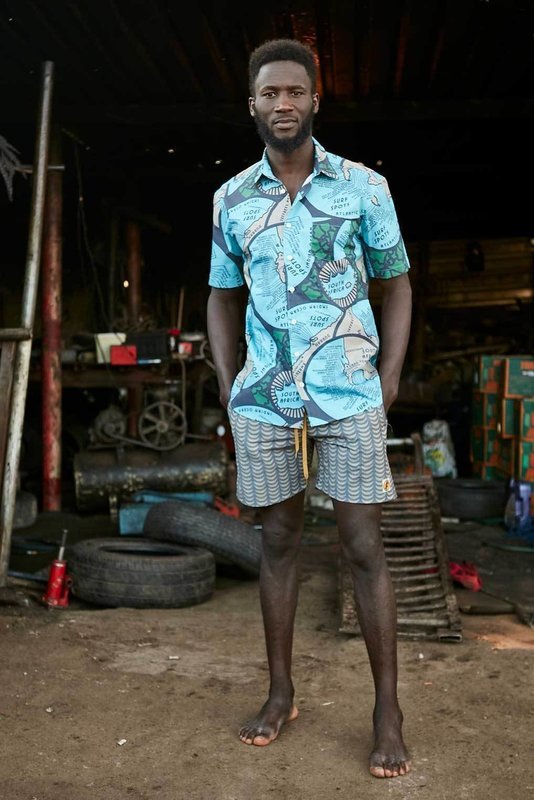

Mami Wata Collection by Sea Sick Surf
From Wikipedia:
Mami Wata (Mammy Water) or La Sirene is a water spirit venerated in West, Central, and Southern Africa, and in the African diaspora in the Americas. Mami Wata spirits are usually female, but are sometimes male.
Mami Wata is often described as a mermaid-like figure, with a woman's upper body (often nude) and the hindquarters of a fish or serpent. In other tales, Mami Wata is fully human in appearance (though never human). The existence and spiritual importance of Mami Wata is deeply rooted in the ancient tradition and mythology of the coastal southeastern Nigerians (Efik, Ibibio, Igbo, Bahumono and Annang people).
#fashion#men's fashion#men's style#male portraits#handsome#mami wata#mermaids#African#African culture
9 notes
·
View notes
Text
USUMUTONG COMMUNITY ATTACKS OVER EBOM COMMUNITY ON THE 18TH DECEMBER 2019
USUMUTONG COMMUNITY ATTACKS OVER EBOM COMMUNITY ON THE 18TH DECEMBER 2019
FOLLOWING THE REPORT OF AN EYE WITHNESS THAT LIFE WERE LOST PROPERTY DAMAGE
It was reported that the people of Usumutong invade the community of Ebom in Abi Local Government of cross river state. following the official report of november 15th 2018.
it was assume it was the people of Ebijakara community that leaves in usumutong community that are causing this problem of bahumono crisis .…
View On WordPress
1 note
·
View note
Text
SHOCKING: Pastor And His Friend Beheaded While Traveling Through Cross River Community (Photo)
SHOCKING: Pastor And His Friend Beheaded While Traveling Through Cross River Community (Photo)
A Nigerian pastor, George Lifted, and his friend, whose identity is still unknown, have been killed in the Bahumono community in Abi Local Government Area of Cross River State.
It was learnt that the victims were ambushed by irate youths, who beheaded them while they were going to one of the Ebom community.
The gory photographs of the victims were splashed on social media by a Facebook user,…
View On WordPress
0 notes
Text
Pastor George Lifted & Friend Beheaded In Communal Clash In Cross River State (Photos)
Pastor George Lifted & Friend Beheaded In Communal Clash In Cross River State (Photos)
George Lifted, pastoring Foursquare gospel church, Ebom, Cross River State, was, yesterday, beheaded alongside his friend in the ongoing communal clash ravaging Bahumono.
According to reports, George, from Assiga, was on his way to his church in Ebom, when he met his death in the hands of those suspected to be from Usumutong. It was gathered that the deceased was the third pastor…
View On WordPress
0 notes
Photo
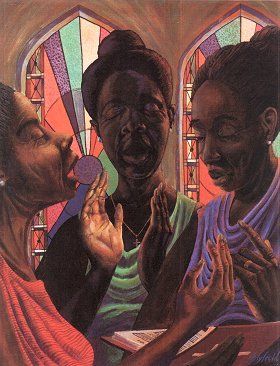

A shout or ring shout is an ecstatic, transcendent religious ritual, first practiced by African slaves in the West Indies and the United States, in which worshipers move in a circle while shuffling and stomping their feet and clapping their hands. Despite the name, shouting aloud is not an essential part of the ritual.
The ring shout was Christianized and practiced in some African American churches into the 20th century, and it continues to the present among the Gullah people of the Sea Islands and in the African Church.
A more modern form, known still as a "shout" (or "praise break"), is practiced in many African churches and non-African Pentecostal churches to the present day.
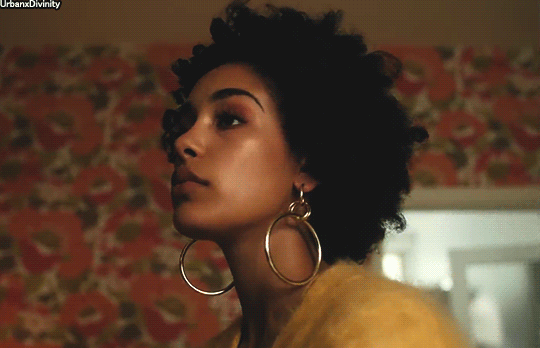
"Shouting" often took place during or after a Christian prayer meeting or worship service. Men and women moved in a circle in a counterclockwise direction, shuffling their feet, clapping, and often spontaneously singing or praying aloud. In Jamaica and Trinidad the shout was usually performed around a special second altar near the center of a church building. In the Sea Islands of Georgia and South Carolina, shouters formed a circle outdoors, around the church building itself.
In some cases, enslaved people retreated into the woods at night to perform shouts, often for hours at a time, with participants leaving the circle as they became exhausted.In the twentieth century some African-American churchgoers in the United States performed shouts by forming a circle around the pulpit, in the space in front of the altar, or around the nave.
Ring shouts were sometimes held for the dead. This custom has been practiced by traditional bands of carnival revelers in New Orleans, Louisiana.
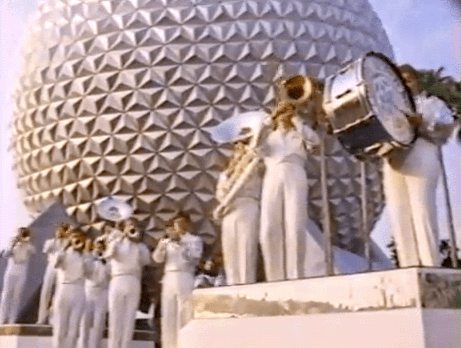
The origins of the ring shout are usually assumed to be derived from African dance, and scholars usually point out the presence of melodic elements such as call-and-response singing and heterophony, as well as rhythmic elements such as tresillo and an "hamboned" rhythm, and aesthetic elements such as counter-clockwise dancing and ecstasy,which makes ring shouts similar to ceremonies among people like the Ibos, Yorubas, Ibibios, Efiks, Bahumono and Bakongo people.
Some scholars have suggested that the ritual may have originated among enslaved Muslims from West Africa as an imitation of tawaf, the mass procession around the Kaaba that is an essential part of the Islamic pilgrimage to Mecca. If so, the word "shout" may come from Arabic shawṭ, meaning "a single run", such as a single circumambulation of the Kaaba, or an open space of ground for running.
According to musicologist Robert Palmer, the first written accounts of the ring shout date from the 1840s. The stamping and clapping in a circle was described as a kind of "drumming," and 19th-century observers associated it with the conversion of slaves to Christianity
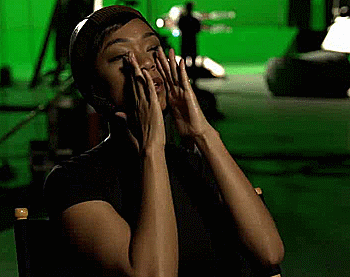
#christianity#kemetic dreams#tawaf#muslim#ibo#ebo#igbo#ibibios#efiks#bahumono#african dance#african#africans#shout#ring shout#mecca#arabic#kaaba#bakongo#shouting
530 notes
·
View notes
Photo
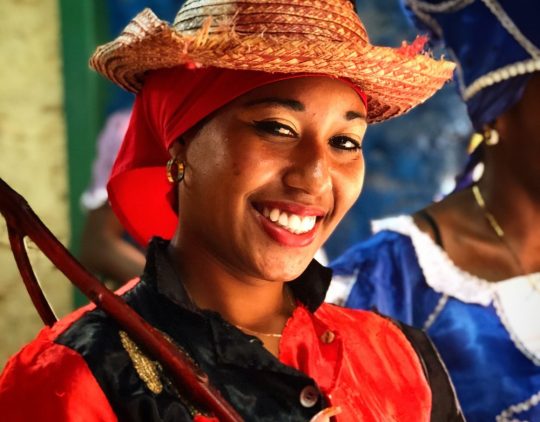
Abakuá, also sometimes known as Nañigo, is an Afro-Cuban men's initiatory fraternity or secret society, which originated from fraternal associations in the Cross River region of southeastern Nigeria and southwestern Cameroon.
Abakuá has been described as "an Afro-Cuban version of Freemasonry".
The Cuban artist Belkis Ayón intensively investigated the Abakuá mythology in her prints.
Abakuá members derive their belief systems and traditional practices from the Efik, Efut, Ibibio Igbo and Bahumono spirits that lived in the forest. Ekpe and synonymous terms were names of both a forest spirit and a leopard related secret society. Much of what the Abakua believe in terms of religion is considered a secret only known to members

Due to the secrecy of the society, little is known of the Abakuá language. It is assumed to be a creolized version of Efik or Ibibio, both closely related languages or dialects from the Cross River region of Nigeria, because this is the cultural region and ethnic groups where the society originated
#abakua#african#african culture#nanigo#afro cuban#cameroon#nigeria#belkis ayon#ibibio#igbo#efut#efik#leopard#cross river#kemetic dreams#spirituality
59 notes
·
View notes
Text
Check out New Post published on Ọmọ Oòduà
New Post has been published on http://ooduarere.com/news-from-nigeria/breaking-news/371-ethnic-groups-nigeri/
The Full List Of All The 371 Ethnic Groups In Nigeria & The States Where They Originated From
Below is a comprehensive list of all Nigerian Tribes and the States where they live…
1 Abayon Cross River
2 Abua (Odual) Rivers
3 Achipa (Achipawa) Kebbi
4 Adim Cross River
5 Adun Cross River
6 Affade Yobe
7 Afizere Plateau
8 Afo Plateau
9 Agbo Cross River
10 Akaju-Ndem (Akajuk) Cross River
11 Akweya-Yachi Benue
12 Alago (Arago) nasarawa
13 Amo Plateau
14 Anaguta Plateau
15 Anang Akwa lbom
16 Andoni Akwa lbom, Rivers
17 Angas Bauchi, Jigawa, Plateau
18 Ankwei Plateau
19 Anyima Cross River
20 Attakar (ataka) Kaduna
21 Auyoka (Auyokawa) Jigawa
22 Awori Lagos, Ogun
23 Ayu Kaduna
24 Babur Adamawa, Bomo, Taraba, Yobe
25 Bachama Adamawa
26 Bachere Cross River
27 Bada Plateau
28 Bade Yobe
29 Bahumono Cross River
30 Bakulung Taraba
31 Bali Taraba
32 Bambora (Bambarawa) Bauchi
33 Bambuko Taraba
34 Banda (Bandawa) Taraba
35 Banka (Bankalawa) Bauchi
36 Banso (Panso) Adamawa
37 Bara (Barawa) Bauchi
38 Barke Bauchi
39 Baruba (Barba) Niger
40 Bashiri (Bashirawa) Plateau
41 Bassa Kaduna, Kogi, Niger, Plateau
42 Batta Adamawa
43 Baushi Niger
44 Baya Adamawa
45 Bekwarra Cross River
46 Bele (Buli, Belewa) Bauchi
47 Betso (Bete) Taraba
48 Bette Cross River
49 Bilei Adamawa
50 Bille Adamawa
51 Bina (Binawa) Kaduna
52 Bini Edo
53 Birom Plateau
54 Bobua Taraba
55 Boki (Nki) Cross River
56 Bkkos Plateau
57 Boko (Bussawa, Bargawa) Niger
58 Bole (Bolewa) Bauchi, Yobe
59 Botlere Adamawa
60 Boma (Bomawa, Burmano) Bauchi
61 Bomboro Bauchi
62 Buduma Borno, Niger
63 Buji Plateau
64 Buli Bauchi
65 Bunu Kogi
66 Bura Adamawa
67 Burak Bauchi
68 Burma (Burmawa) Plateau
69 Buru Yobe
70 Buta (Butawa) Bauchi
71 Bwall Plateau
72 Bwatiye Adamawa
73 Bwazza Adamawa
74 Challa Plateau
75 Chama (Chamawa Fitilai) Bauchi
76 Chamba Taraba
77 Chamo Bauchi
78 Chibok (Chibbak) Yobe
79 Chinine Borno
80 Chip Plateau
81 Chokobo Plateau
82 Chukkol Taraba
83 Daba Adamawa
84 Dadiya Bauchi
85 Daka Adamawa
86 Dakarkari Niger, Kebbi
87 Danda (Dandawa) Kebbi
88 Dangsa Taraba
89 Daza (Dere, Derewa) Bauchi
90 Degema Rivers
91 Deno (Denawa) Bauchi
92 Dghwede Bomo
93 Diba Taraba
94 Doemak (Dumuk) Plateau
95 Ouguri Bauchi
96 Duka (Dukawa) Kebbi
97 Duma (Dumawa) Bauchi
98 Ebana (Ebani) Rivers
99 Ebirra (lgbirra) Edo, Kogi,FCT,NasarawaBorno,Ondo
100 Ebu Edo, Kogi
101 Efik Cross River
102 Egbema Rivers
103 Egede (lgedde) Benue
104 Eggon Plateau
105 Egun (Gu) Lagos,Ogun
106 Ejagham Cross River
107 Ekajuk Cross River
108 Eket Akwa Ibom
109 Ekoi Cross River
110 Engenni (Ngene) Rivers
111 Epie Rivers
112 Esan (Ishan) Edo
113 Etche Rivers
114 Etolu (Etilo) Benue
115 Etsako Edo
116 Etung Cross River
117 Etuno Edo
118 Falli Adamawa
119 Fulani (Pulbe)
Bauchi, Borno, Jigawa , Kaduna, Kano, Katsina, Kebbi , Niger, Sokoto, Taraba, Yobe, etc.
120 Fyam (Fyem) Plateau
121 Fyer(Fer) Plateau
122 Ga’anda Adamawa
123 Gade Niger
124 Galambi Bauchi
125 Gamergu-Mulgwa Bomo
126 Qanawuri Plateau
127 Gavako Borno
128 Gbedde Kogi
129 Gengle Taraba
130 Geji Bauchi
131 Gera (Gere, Gerawa) Bauchi
132 Geruma (Gerumawa) Plateau
133 Geruma (Gerumawa) Bauchi
134 Gingwak Bauchi
135 Gira Adamawa
136 Gizigz Adamawa
137 Goernai Plateau
138 Gokana (Kana) Rivers
139 Gombi Adamawa
140 Gornun (Gmun) Taraba
141 Gonia Taraba
142 Gubi (Gubawa) Bauchi
143 Gude Adamawa
144 Gudu Adamawa
145 Gure Kaduna
146 Gurmana Niger
147 Gururntum Bauchi
148 Gusu Plateau
149 Gwa (Gurawa) Adamawa
150 Gwamba Adamawa
151 Gwandara Kaduna, Niger, Plateau
152 Gwari (Gbari) Kaduna, Niger, Plateau
153 Gwom Taraba
154 Gwoza (Waha) Bomo
155 Gyem Bauchi
156 Hausa: Bauchi, Borno, Jigawa, Kaduna,Kano, Kastina, Kebbi, Niger,Taraba, Sokoto, etc
157 Higi (Hig) Borno, Adamawa
158 Holma Adamawa
159 Hona Adamawa
160 Ibeno Akwa lbom
161 Ibibio Akwa lbom
162 Ichen Adamawa
163 Idoma Benue, Taraba
164 Igalla Kogi
Igbo-culture
165 lgbo: Abia, Anambra, Benue, Delta, Ebonyi,Enugu, Imo, Rivers
166 ljumu Kogi
167 Ikorn Cross River
168 Irigwe Plateau
169 Isoko Delta
170 lsekiri (Itsekiri) Delta
171 lyala (lyalla) Cross River
172 lzondjo) Bayelsa, Delta, Ondo, Rivers
173 Jaba Kaduna
174 Jahuna (Jahunawa) Taraba
175 Jaku Bauchi
176 Jara (Jaar Jarawa Jarawa-Dutse)
Bauchi
177 Jere (Jare, Jera, Jera, Jerawa) Bauchi, Plateau
178 Jero Taraba
179 Jibu Adamawa
180 Jidda-Abu Plateau
181 Jimbin (Jimbinawa) Bauchi
182 Jirai Adamawa
183 Jonjo (Jenjo) Taraba
184 Jukun
Bauchi, Benue,Taraba, Plateau
185 Kaba(Kabawa) Taraba
186 Kadara Taraba
187 Kafanchan Kaduna
188 Kagoro Kaduna
189 Kaje (Kache) Kaduna
190 Kajuru (Kajurawa) Kaduna
191 Kaka Adamawa
192 Kamaku (Karnukawa) Kaduna, Kebbi, Niger
193 Kambari Kebbi, Niger
194 Kambu Adamawa
195 Kamo Bauchi
196 Kanakuru (Dera) Adamawa, Borno
197 Kanembu Bomo
198 Kanikon Kaduna
199 Kantana Plateau
200 Kanufi
Kaduna, Adamawa, Bomo, Kano,Niger, Jigawa, Plateau, Taraba, Yobe
201 Karekare (Karaikarai) Bauchi, Yobe
202 Karimjo Taraba
203 Kariya Bauchi
204 Katab (Kataf) Kaduna
205 Kenern (Koenoem) Plateau
206 Kenton Taraba
207 Kiballo (Kiwollo) Kaduna
208 Kilba Adamawa
209 Kirfi (Kirfawa) Bauchi
210 Koma Taraba
211 Kona Taraba
212 Koro (Kwaro) Kaduna, Niger
213 Kubi (Kubawa) Bauchi
214 Kudachano (Kudawa) Bauchi
215 Kugama Taraba
216 Kulere (Kaler) Plateau
217 Kunini Taraba
218 Kurama Jigawa, Kaduna, Niger, Plateau
219 Kurdul Adamawa
220 Kushi Bauchi
221 Kuteb Taraba
222 Kutin Taraba
223 Kwalla Plateau
224 Kwami (Kwom) Bauchi
225 Kwanchi Taraba
226 Kwanka (Kwankwa) Bauchi, Plateau
227 Kwaro Plateau
228 Kwato Plateau
229 Kyenga (Kengawa) Sokoto
230 Laaru (Larawa) Niger
231 Lakka Adamawa
232 Lala Adamawa
233 Lama Taraba
234 Lamja Taraba
235 Lau Taraba
236 Ubbo Adamawa
237 Limono Bauchi, Plateau
238 Lopa (Lupa, Lopawa) Niger
239 Longuda (Lunguda) Adamawa, Bauchi
240 Mabo Plateau
241 Mada Kaduna, Plateau
242 Mama Plateau
243 Mambilla Adamawa
244 Manchok Kaduna
245 Mandara (Wandala) Bomo
246 Manga (Mangawa) Yobe
247 Margi (Marghi) Adamawa, Bomo
248 Matakarn Adamawa
249 Mbembe Cross River, Enugu
250 Mbol Adamawa
251 Mbube Cross River
252 Mbula Adamawa
253 Mbum Taraba
254 Memyang (Meryan) Plateau
255 Miango Plateau
256 Miligili (Migili) Plateau
257 Miya (Miyawa) Bauchi
258 Mobber Bomo
259 Montol Plateau
260 Moruwa (Moro’a, Morwa) Kaduna
261 Muchaila Adamawa
262 Mumuye Taraba
263 Mundang Adamawa
264 Munga (Mupang) Plateau
265 Mushere Plateau
266 Mwahavul (Mwaghavul) Plateau
267 Ndoro Taraba
268 Ngamo Bauchi, Yobe
269 Ngizim Yobe
270
Ngweshe (Ndhang.Ngoshe-Ndhang)
Adamawa, Borno
271 Ningi (Ningawa) Bauchi
272 Ninzam (Ninzo) Kaduna, Plateau
273 Njayi Adamawa
274 Nkim Cross River
275 Nkum Cross River
276 Nokere (Nakere) Plateau
277 Nunku Kaduna, Plateau
278 Nupe Niger
279 Nyandang Taraba
280 Ododop Cross River
281 Ogori Kwara
282 Okobo (Okkobor) Akwa lbom
283 Okpamheri Edo
284 Olulumo Cross River
285 Oron Akwa lbom
286 Owan Edo
287 Owe Kwara
288 Oworo Kwara
289 Pa’a (Pa’awa Afawa) Bauchi
290 Pai Plateau
291 Panyam Taraba
292 Pero Bauchi
293 Pire Adamawa
294 Pkanzom Taraba
295 Poll TarabaPolchi Habe Bauchi
297 Pongo (Pongu) Niger
298 Potopo Taraba
299 Pyapun (Piapung) Plateau
300 Qua Cross River
301 Rebina (Rebinawa) Bauchi
302 Reshe Kebbi, Niger
303 Rindire (Rendre) Plateau
304 Rishuwa Kaduna
305 Ron Piateau
306 Rubu Niger
307 Rukuba Plateau
308 Rumada Kaduna
309 Rumaya Kaduna
310 Sakbe Taraba
311 Sanga Bauchi
312 Sate Taraba
313 Saya (Sayawa Za’ar) Bauchi
314 Segidi (Sigidawa) Bauchi
315 Shanga (Shangawa) Sokoto
316 Shangawa (Shangau) Plateau
317 Shan-Shan Plateau
318 Shira (Shirawa) Kano
319 Shomo Taraba
320 Shuwa Adamawa, Borno
321 Sikdi Plateau
322 Siri (Sirawa) Bauchi
323 Srubu (Surubu) Kaduna
324 Sukur Adamawa
325 Sura Plateau
326 Tangale Bauchi
327 Tarok Plateau, Taraba
328 Teme Adamawa
329 Tera (Terawa) Bauchi, Bomo
330 Teshena (Teshenawa) Kano
331 Tigon Adamawa
332 Tikar Taraba
333 Tiv Benue, Plateau, Taraba and Nasarawa
334 Tula Bauchi
335 Tur Adamawa
336 Ufia Benue
337 Ukelle Cross River
338 Ukwani (Kwale) Delta
339 Uncinda Kaduna, Kebbi, Niger, Sokoto
340 Uneme (Ineme) Edo
341 Ura (Ula) Niger
342 Urhobo Delta
343 Utonkong Benue
344 Uyanga Cross River
345 Vemgo Adamawa
346 Verre Adamawa
347 Vommi Taraba
348 Wagga Adamawa
349 Waja Bauchi
350 Waka Taraba
351 Warja (Warja) Jigawa
352 Warji Bauchi
353 Wula Adamawa
354 Wurbo Adamawa
355 Wurkun Taraba
356 Yache Cross River
357 Yagba Kwara
358 Yakurr (Yako) Cross River
359 Yalla Benue
360 Yandang Taraba
361 Yergan (Yergum) Plateau
362 Yoruba
Kwara, Lagos, Ogun, Ondo, Oyo, Osun, Ekiti, Kogi
363 Yott Taraba
364 Yumu Niger
365 Yungur Adamawa
366 Yuom Plateau
367 Zabara Niger
368 Zaranda Bauchi
369 Zarma (Zarmawa) Kebbi
370 Zayam (Zeam) Bauchi
371 Zul (Zulawa) Bauchi
If you did not see your Tribe Name in this list, you can add please.
0 notes